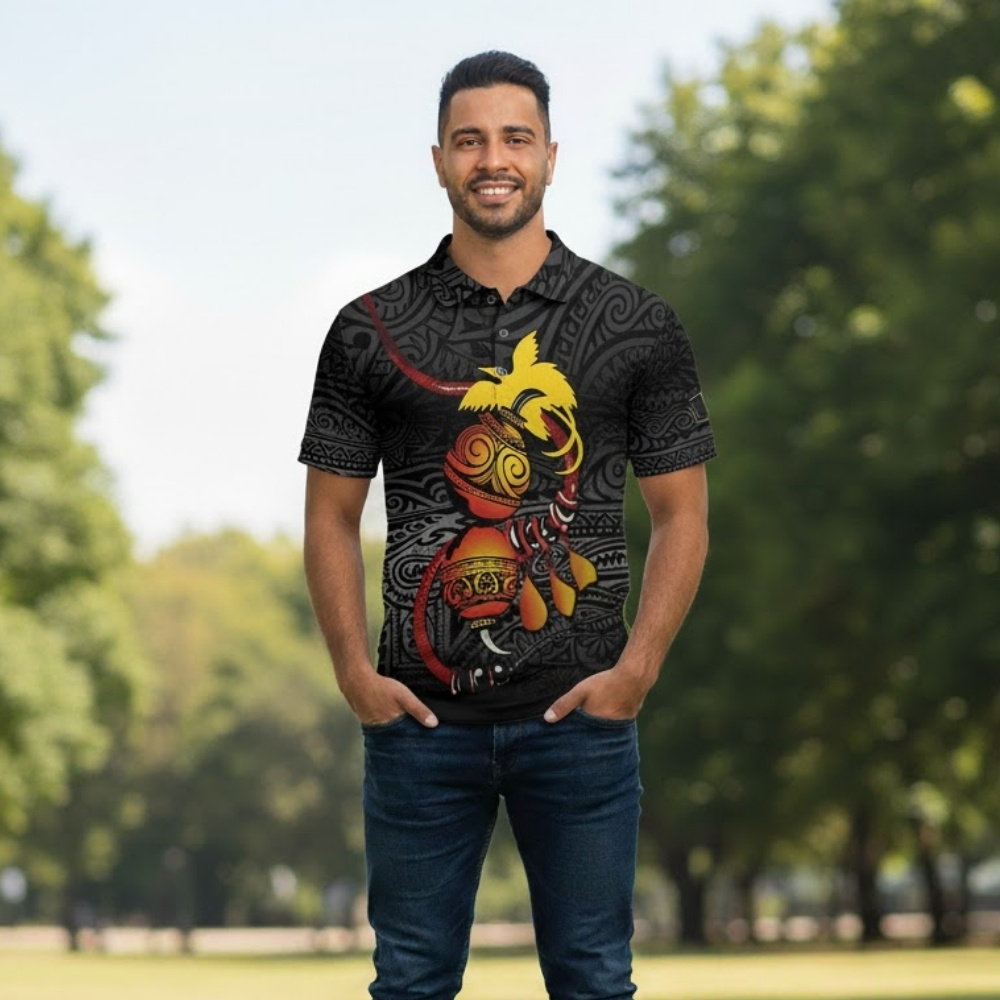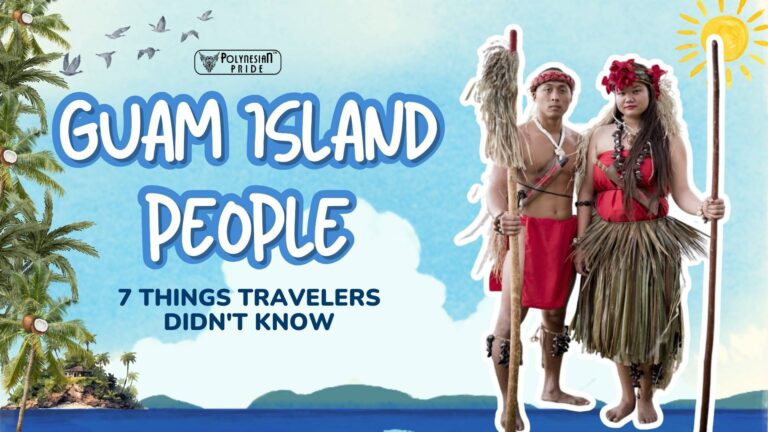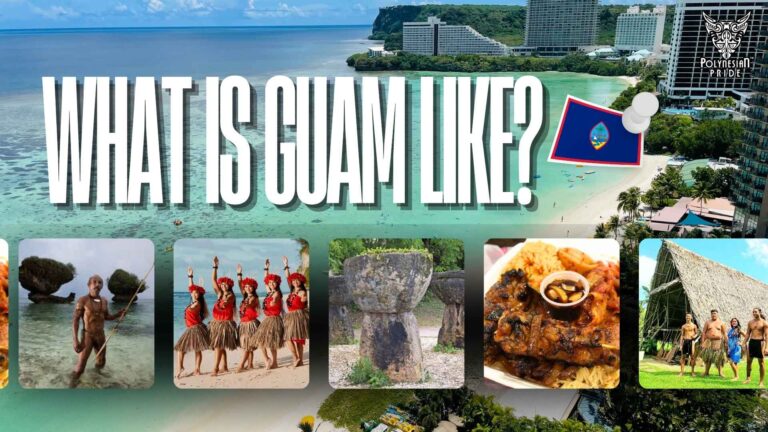Papua Koteka and the Spirit of Indigenous Identity

In the misty highlands of Papua, a striking yet straightforward object defines the region’s cultural identity — the Papua Koteka, a traditional gourd covering worn by men of the Dani, Lani, and Yali tribes. Crafted from a dried bottle gourd, it has been used for generations not merely as clothing, but as a proud expression of manhood, respect, and indigenous Papuan heritage.
Have you ever imagined how one small piece of nature could carry such deep meaning? The Koteka is more than an item of attire — it’s a living symbol of Melanesian culture, reflecting the harmony between people, land, and tradition.
Ready to explore how this humble gourd became one of Papua’s highlands tribes’ most powerful cultural symbols — a bridge between ancient tradition and modern identity?
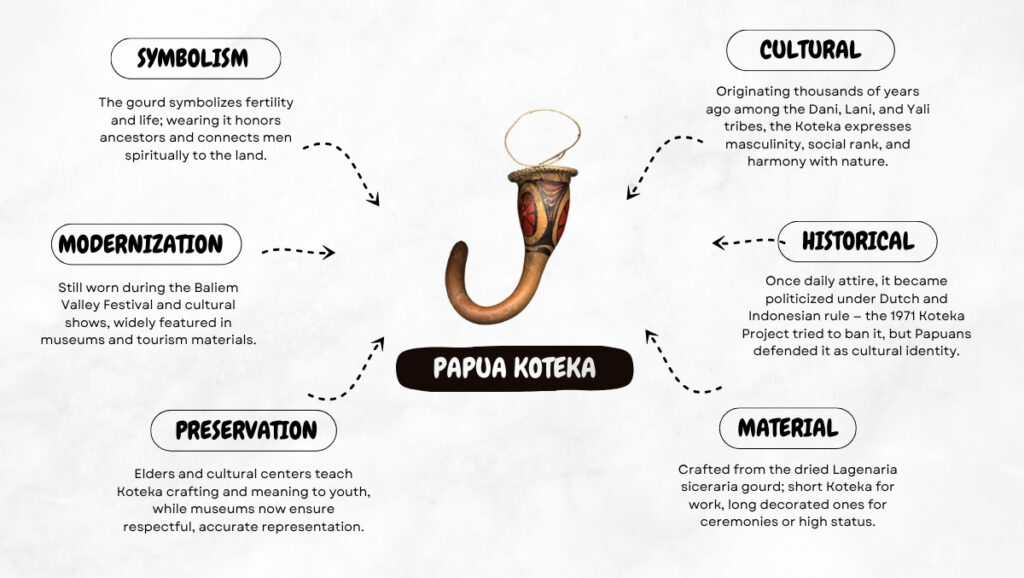
1. Cultural and Anthropological Aspect
The traditional Koteka of Papua is more than a piece of clothing — it is a living expression of tribal identity, manhood, and cultural resilience. For the highland peoples of Papua, it reflects a deep connection between nature, society, and spirituality.
Origins and Traditional Background
The Koteka has been a part of Papua’s highland culture for centuries. Anthropologists believe it originated thousands of years ago among the Dani, Lani, and Yali tribes in the central highlands of Papua, where communities lived in isolation surrounded by mountains and dense forests. In this tropical environment, heavy clothing was unnecessary, so the Koteka, crafted from a dried bottle gourd, was born.
- The Dani tribe’s clothing style favors short, thick Koteka pointing upward, symbolizing strength and practicality.
- The Lani people prefer a wider and more curved gourd, often angled upward — a design believed to express vitality and masculine pride.
- The Yali people’s culture is known for their long, slender Koteka, which can exceed 40 cm, highlighting both craftsmanship and tribal uniqueness.
Archaeological and ethnographic studies indicate that the Koteka may have existed for over a thousand years, making it one of the oldest forms of highland tribal attire in Papua still in use today.

Symbolism and Social Meaning
The Koteka is a visible symbol of masculinity, maturity, and community status. Each tribe’s Koteka differs in shape, size, and decoration, revealing subtle clues about the wearer’s social role or marital status.
- Young men wear smaller Koteka, symbolizing early adulthood and humility.
- Married or senior men often wear larger, decorated versions to represent authority and responsibility.
- Warriors or dancers may angle the Koteka higher to display pride and readiness, while elders often wear it more horizontally to signify wisdom and balance.
Decorations like cassowary feathers, shell ornaments, or red clay paint further distinguish rank and ceremony. Within highland culture, the Koteka serves as both clothing and a code, expressing values of strength, discipline, and belonging.
Rituals, Ceremonies, and Community Roles
Beyond its daily use, the Koteka plays an essential role in tribal rituals and communal ceremonies. During major cultural events, men wear elaborately decorated Koteka paired with face paint and body ornaments.
- During the Baliem Valley Festival, men from different tribes display their finest Koteka while performing war dances and songs that honor ancestral spirits.
- In rites of passage, young men receive their first Koteka as a sign of maturity and readiness for adult responsibilities.
- Special Koteka made for ceremonies may feature bright pigments, shell ornaments, and cassowary feathers, turning a daily object into a sacred cultural emblem.
These customs are more than tradition — they form a living bridge connecting modern Papua with its ancestral heritage, where ritual and daily life remain deeply intertwined.
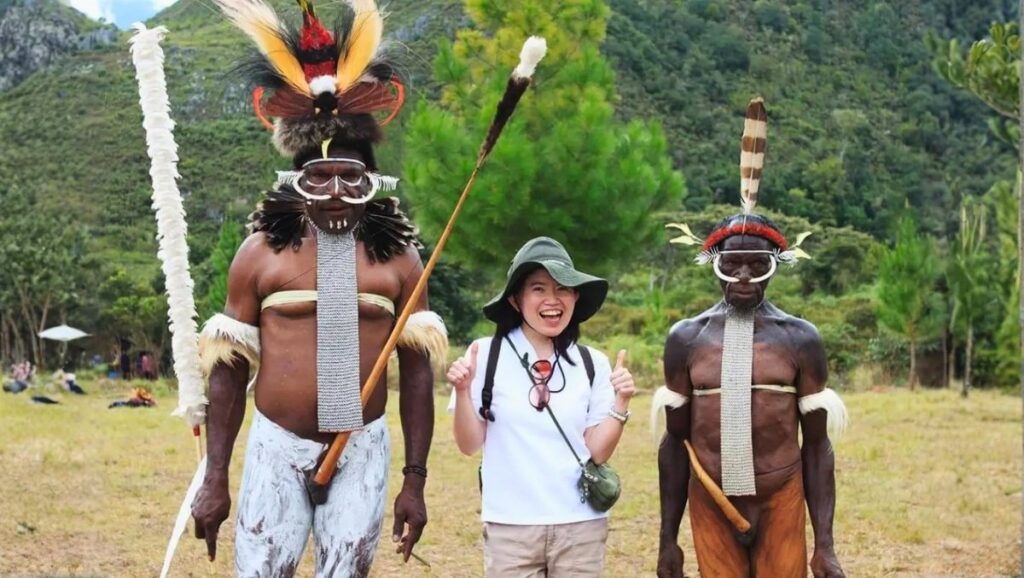
Connection to Melanesian Identity
The Koteka of Papua reflects the very essence of Melanesian culture, where the human body and the natural world are deeply intertwined. Within the Papua highlands tribes, the act of growing, shaping, and wearing the Koteka is a ritual of harmony with the earth, where the gourd becomes a vessel of identity, strength, and ancestral memory.
- The bottle gourd used to craft the Koteka symbolizes fertility, continuity, and the cycle of life — it grows from the soil, is nurtured by human hands, and returns to the land when its purpose is fulfilled.
- Wearing the Koteka represents a dialogue with nature: it honors the belief that man and the environment are interdependent, each sustaining the other in a balanced, respectful relationship.
- Within Melanesia as a whole, the Koteka is a regional expression of spiritual belonging and tribal pride. Linking Papuan culture to a broader network of island traditions that celebrate the body as sacred art.
Today, the traditional Papua Koteka remains a powerful cultural symbol across Melanesia. Its modern representation serves as both a marker of indigenous resilience and a debated symbol of modernization versus cultural preservation, embodying the ongoing struggle to protect identity while embracing a changing world.
2. Historical and Political Aspect
The history of the Koteka Papua traces how a simple gourd covering became a political and cultural symbol. It was shaped by colonial encounters, modernization, and national identity. Once a common feature of daily life in the highlands, this indigenous costume of Papua became a subject of controversy during the 20th century as outside influences tried to redefine what it meant to be “civilized.”
- Pre-colonial era (before the 1800s): Highland tribes such as the Dani, Lani, and Yali wore the Koteka as normal clothing suited to their climate and lifestyle.
- Dutch colonial period (1828–1962): Missionaries and colonial administrators began labeling traditional Papuan dress as “primitive.” Efforts to introduce Western clothing spread, though many communities discreetly maintained their customs.
- Post-colonial transition and the Koteka Project (1971): Following Papua’s integration into Indonesia (1963), the government launched the Koteka Project, promoting Western-style clothing as a sign of modernization. This campaign sparked resentment, as Papuans saw it as an assault on their cultural identity.
- Late 20th century to present: The Koteka gradually disappeared from daily life but reemerged as a symbol of heritage and indigenous pride, celebrated in cultural festivals and preserved in museum exhibitions.
Through these historical phases, the Koteka transitioned from tribal fashion to an icon of indigenous identity and resistance. What outsiders once misunderstood as primitive has become a proud emblem of resilience — a reminder that cultural expression can withstand political and social pressure.

3. Material and Functional
The Koteka of Papua is made primarily from the dried bottle gourd (Lagenaria siceraria) — a plant cultivated specifically for this purpose. The gourd is harvested, hollowed, sun-dried, and sometimes smoked over a fire to harden and preserve it. Craftsmen then polish and adjust the shape, attaching a small vine or fiber cord to secure it around the waist.
- Shape and size: They vary by tribe — some are short and thick, others long and slender. Some tribes even enhance the natural beauty of the gourd using natural pigments or smoke staining for darker tones.
- How it’s worn: Fixed with a rattan or bark-fiber belt around the waist; the angle (upward or horizontal) depends on tribe and custom.
- Practical function: Provides body covering and modesty, while serving as a symbol of masculinity and a ritual ornament during ceremonies.
In essence, the Koteka is more than a garment — it’s a fusion of practicality and identity, turning a simple gourd into one of the most enduring icons of highland tribal attire in Papua. Beyond its practical role, the Koteka’s form and craftsmanship reveal deeper meanings that connect to status, spirituality, and cultural identity.
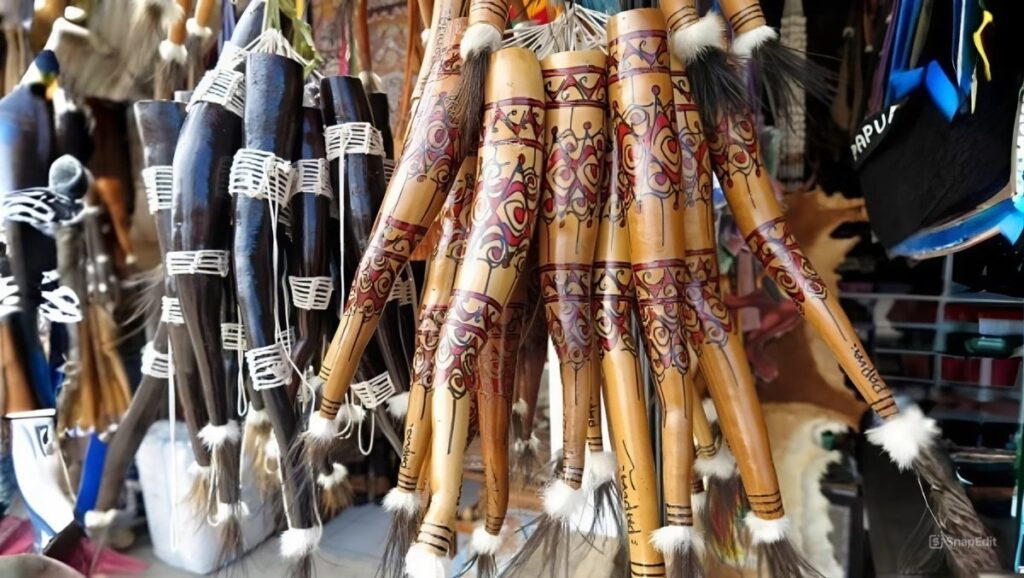
4. Symbolism and Identity
The Koteka Papua is more than clothing — it embodies how the highland peoples interpret life, manhood, and belonging. Over generations, it has evolved from a practical garment into a symbol of continuity, spirituality, and pride.
A Symbol of Spiritual and Natural Harmony
In traditional belief, the Koteka connects the wearer to both ancestral strength and the fertility of the land.
- The gourd, grown and shaped by hand, represents life and continuity.
- Its earthy form reminds men of their dependence on nature and their duty to care for it.
- Wearing the traditional Koteka of Papua is, therefore, an act of honoring ancestors and affirming one’s roots.
An Emblem of Cultural Pride and Identity
Over time, the Koteka has grown from a private symbol into a public statement of identity.
- Once misinterpreted by outsiders as primitive, it now stands for cultural pride and resistance.
- During festivals and exhibitions, the Koteka Papua is displayed as a proud emblem of heritage — proof that progress and tradition can coexist.
- For younger generations, it represents authenticity and the strength of highland ancestry.
In both sacred rituals and modern cultural festivals, the Koteka stands as proof that tradition can adapt without losing its essence.
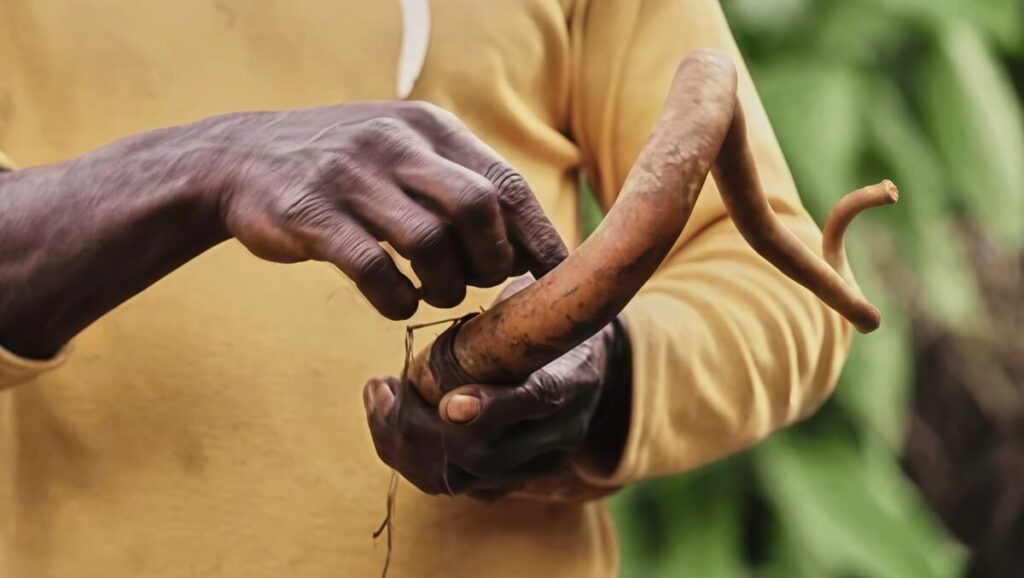
The Koteka continues to evolve with its people. Though no longer everyday wear, it remains a visible declaration of who Papuans are — grounded in their past, proud in the present, and unafraid of the future. It is not just an artifact but a living identity, reminding the world that culture can adapt without losing its soul.
5. Modernization and Tourism
In modern Papua, the traditional Koteka has transformed from a daily necessity into a symbol of heritage. While its practical use has faded, its cultural significance continues to thrive through festivals and traditional performances.
Koteka as a Cultural Symbol in Tourism
Today, the Koteka Papua has become one of the most recognizable icons of Papua’s cultural identity. It appears in Baliem Valley cultural festivals, museum exhibitions, tourism posters, and even postcards promoting the region’s indigenous heritage.
For many visitors, it symbolizes the authenticity and mystery of the Papua Highlands — a visual reminder of ancient customs that still breathe within a modern nation.
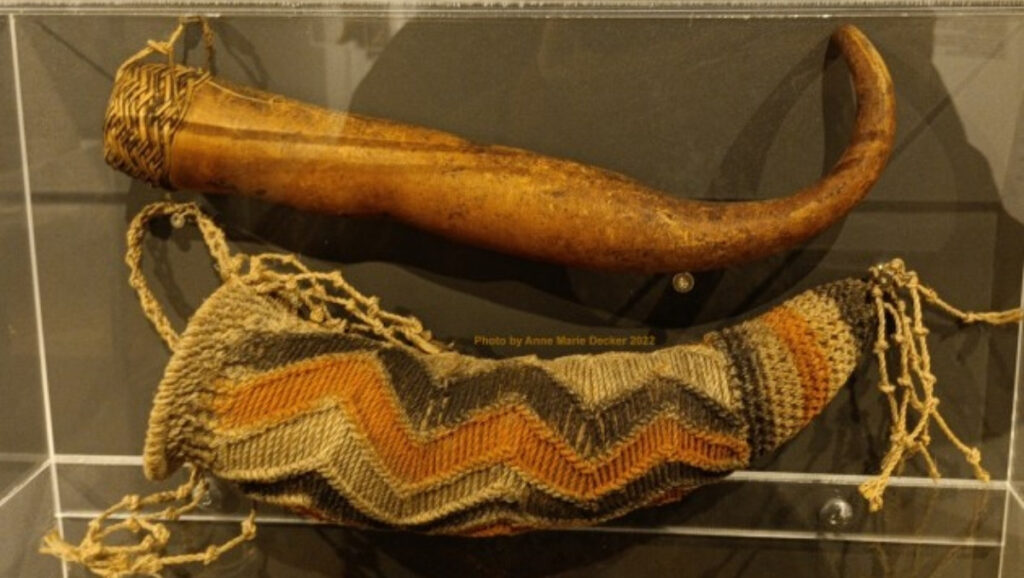
The Perspective of the Younger Generation
Among younger Papuans, opinions about the Koteka are divided.
- Some view it as a source of cultural pride, a visible reminder of who they are and where they come from.
- Others see it as something belonging to the past — meaningful but no longer practical in daily life.
Despite differing views, most agree that the Papua penis gourd remains an essential part of their shared history and deserves to be preserved with dignity.
Responsible Tourism and Cultural Respect
As the Koteka gains attention from tourists, respect for local customs becomes vital. Visitors are encouraged to observe cultural etiquette:
- Avoid laughing, mocking, or making inappropriate comments.
- Always ask permission before taking photos.
- Understand that the Koteka is a sacred cultural garment, not a curiosity or costume.
Responsible tourism ensures that the traditional Koteka of Papua is appreciated as a symbol of cultural resilience — not misrepresented as exotic imagery. By showing respect, travelers help protect the dignity of Papua’s people and the living heritage that the Koteka represents.
If you’re looking for something both special and meaningful to remember your trip to Papua New Guinea or to gift a friend, think about clothing inspired by PNG’s rich culture and vibrant traditions.
6. Ethical and Cultural Preservation Aspect
As tourism and globalization reshape Papua’s image, questions of ethics and cultural preservation have become increasingly important.
The story of the Koteka Papua does not end with festivals or tourism — it continues in the effort to protect and respect indigenous heritage. As modernization advances, ethical preservation becomes crucial to ensure the Koteka is not reduced to a stereotype but honored as a living cultural symbol.
- Community-led preservation: Local elders and cultural groups play the main role in teaching younger generations how to make and wear the Papua Koteka properly, passing down traditional knowledge and respect.
- Academic and museum ethics: Anthropologists and museums are urged to collaborate directly with the Dani, Lani, and Yali tribes to ensure accurate representation, avoiding exploitation or sensationalism in exhibits.
- Government and NGO support: Educational programs and cultural centers in Papua now highlight traditional attire like the Papua penis gourd as part of Melanesian heritage rather than exotic artifacts.
In the end, preserving the Koteka means protecting more than a garment — it means safeguarding the dignity, identity, and voice of Papua’s indigenous people. Ethical awareness ensures that this symbol of pride remains authentic, respected, and alive for generations to come.
Final Thoughts: Preserving the Soul of Koteka Papua
The Koteka Papua is far more than a relic of the past — it is a voice of identity, resilience, and ancestral wisdom. From the misty highlands to the modern stage, it continues to embody the harmony between people, nature, and tradition.
Protecting this heritage means more than displaying it at festivals or museums; it means respecting the communities that live its meaning every day. As the world grows smaller, the Koteka of PNG reminds us of something timeless — that culture, when honored and preserved, is not lost to change but strengthened by it.
FAQs
Where in Papua are kotekas worn?
Primarily in the Central Papuan Highlands — especially around Wamena (Jayawijaya Regency) and neighboring areas like Lanny Jaya, Yahukimo, Tolikara, and Puncak Jaya. Usage today is mostly ceremonial at village events and festivals
What does the length of a koteka signify?
Length commonly signals age, status, or ritual role, with longer pieces often associated with seniority or prestige. Practically, men choose shorter kotekas for daily work and longer, more ornate ones for dances and ceremonies.
Which tribes in Papua still use the Koteka today?
Most visibly, the Dani, Lani, and Yali of the Baliem Valley and surrounding highlands. Some Mek (including Kosarek/Hubal) and Moni communities also retain ceremonial use.
How do tourists experience Koteka culture in Wamena or Baliem Valley?
Visitors can respectfully watch performances, take guided village tours, and photograph with permission during the Baliem Valley Festival.

I am a cultural historian and editor with over 10 years of research into pre-contact Polynesian history, the Lapita migration, and oral traditions. Share the excitement of my latest publications.
My contact:
Email: [email protected]
Tel: +64 21 456 7890



